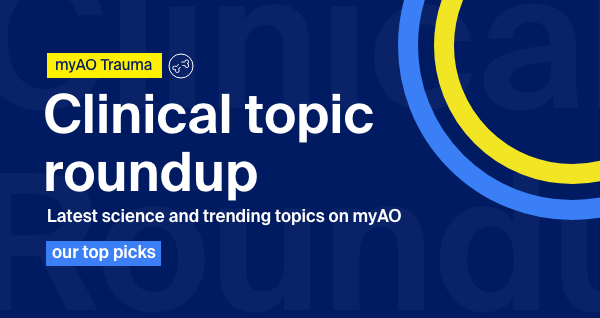Clinical Topic Roundup
August 2021
Small animal cases can pose unique challenges for veterinary orthopedic surgery. In this clinical topic roundup, you´ll find an exclusive selection of AOVET´s knowledge gems on Small Animal Orthopedics.March 2022
Pelvic and acetabular fractures (PAFs) are among the most serious injuries treated by orthopedic surgeons and require rapid and precise treatment. In response, AO Trauma's pelvis education task force is working on the definition of a curriculum to address these challenges.April 2022
There are a number of possible causes of bone deformities in animals, the two most common being a genetic disorder and injury (trauma). Limb deformities can be managed conservatively, by growth acceleration, growth retardation, or in severe or late diagnosed cases by combining these techniques. Once the growth plate has closed, correction can only be achieved by a corrective osteotomy technique.July 2022
Oculoplastic and Orbital Surgery (also known as oculofacial surgery, or ophthalmic plastic and reconstructive surgery) treats conditions of the eyelids, eye socket and tear drainage system. myAO is offering you the following exclusive selection of "knowledge gems" around Oculoplastic and Orbital Surgery.September 2022
Children may experience several types of pediatric spinal deformity, including scoliosis, kyphosis and spondylolisthesis. While many pediatric spinal deformities can be treated conservatively, with physical therapy or bracing, some require surgery.September 2021
Navigation technology is a widely available tool in spine surgery, and Computer-assisted Surgery (CAS) and Image-guided Surgery (IGS) have become a part of clinical routine in many centers. It is the aim of this roundup to give an overview on the current knowledge shared on myAO concerning the capabilities of computer-assisted and image-guided approaches.January 2022
If something goes wrong with small animal fractures, early recognition and proper management is important and can be crucial in order to win the game in face of a complication.May 2022
Surgeons’ demand for knowledge and training on Head & Neck Cancer and Oral Oncology spans the specialties from head and neck surgery to maxillofacial, plastic, ear, nose, and throat, and general surgery. myAO is offering you the following exclusive selection of "knowledge gems" around Head & Neck Cancer and Oral Oncology.












